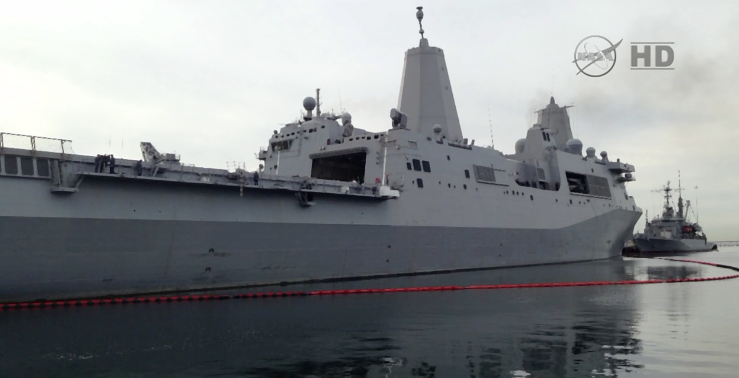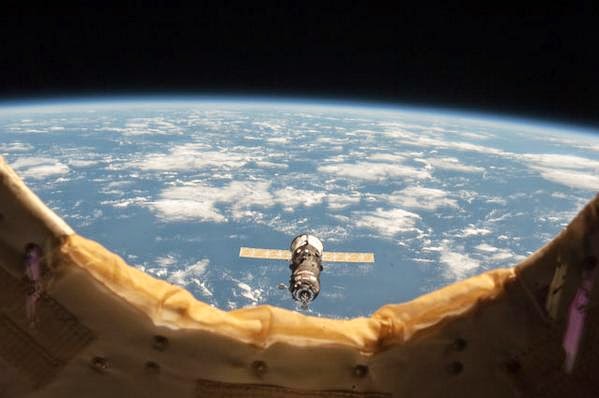Delta IV Heavy perched on pad LC37 at Cape Canaveral. On Thursday there had been higher winds than desired, and the launch was definitely scrubbed when there was a problem with one of the Core fuel valves. Liftoff reset for the next day.
Friday morning. Although overcast, conditions are fine and the launch proceeds. Excess fuel fumes burn off at the left.
Liftoff! View from the Kennedy Space Center visitors area, looking out towards the Atlantic Ocean. The Delta IV clears the tower and heads out over the ocean.
Last view of the Delta IV just before it enters the overcast layer. All engines performing as expected.
Once in the clouds, NASA TV selected between on-vehicle camera or the mission control computer simulation screen.
View from the onboard camera. You can see one of the boosters on one side and the flames at its bottom. The camera is placed on the capsule edge. Camera lens is a fish-eye lens.
Booster separation. Bright sunlight glare off the white paint of the booster. Only the core center engine is now operating.
Main engine is about to be shutdown, designated MECO (Main Engine Cut-Off). The rocket has passed Bermuda.
MECO, and the main stage has been jettisoned.
The second stage engine is activated, heading the craft toward its first elliptical-shaped orbit.
The fairings surrounding the mock-up of the service module are jettisoned, and unseen to the camera the escape tower and capsule covering are blasted forward and away from the craft.
After the first elliptical orbit, the second stage fires again to push the craft into a highly arched ellipse which will bring the capsule back to Earth at a high-G descent to simulate the speed at which a returning capsule would reach the atmosphere from a manned mission.
The capsule has separated form the second stage and mock service module, and performs some orientation tests.
The capsule rotates to its final ready position for entering the Earth's orbit at about 8 G's.
In the Pacific, off the coast of Baja California, the US Navy stands by with the recovery ship USS Anchorage. A drone circles the expected splashdown are for visual coverage, and manned speedboats and helicopters await the Orion capsule.
Orion's path through the atmosphere brought it to about 1.5 miles from it's projected splashdown site. In NASA terms, that's a bulls-eye!
After two drogue parachutes slowed the Orion down, three landing 'chutes opened to bring the Orion to a safe stop in the water. Several buoy balloons inflated to keep the capsule right-side up in the gently swelling waves. After landing, one of the chutes separated and sank, and at least one balloon failed. Recovery crew was swiftly at the capsule.
Well done NASA! Images by NASA, Nasa TV, and ULA.



















































